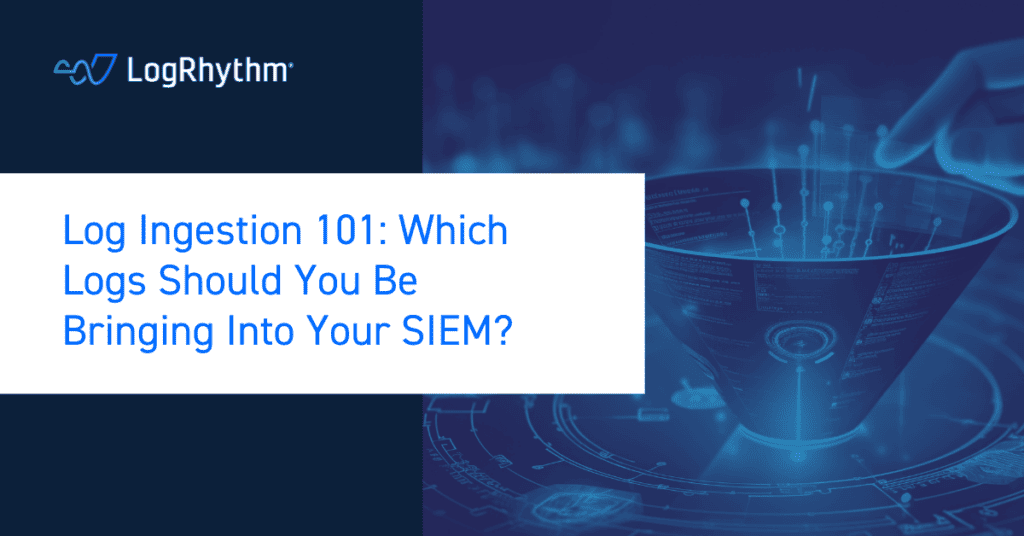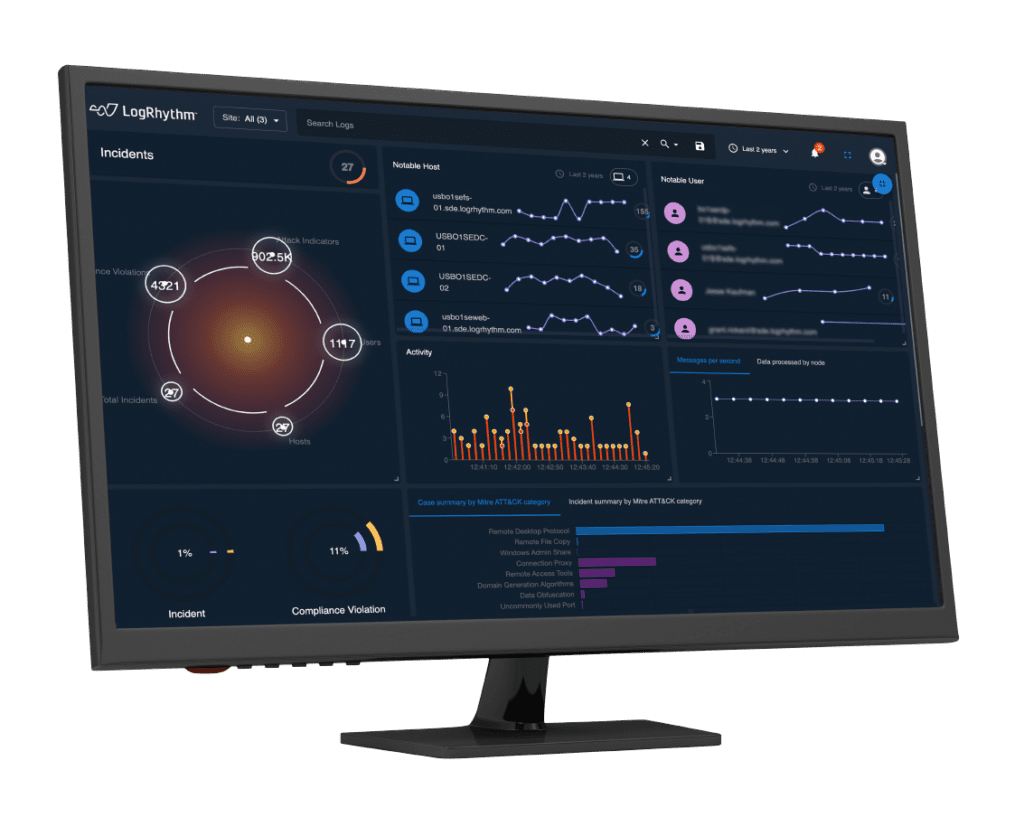Table of Contents
Log management is a critical component of maintaining the security, stability, and performance of any IT system. It plays a vital role in both proactive monitoring and reactive incident response.
Log management is crucial for a wide range of industries and companies that rely on digital systems and networks, including but not limited to those in financial services, healthcare, retail, telecommunications, utilities, education, as well as transportation and logistics.
What is Log Management?
Before we go any further, let’s define log management. Logs are records of events or activities that occur within an IT environment. These events can include system errors, security breaches, user activities, and more. Log management is a process that involves the collection, aggregation, storage, and analysis of this log data. This data can be generated by a number of different software and hardware components within a computer system or network.
Key Aspects of Log Management
In order to fully understand how to proceed with log management — as well as why it’s essential to do so — let’s explore the key aspects of log management.
Collection of data: Log data is generated by a wide range of sources, including operating systems, applications, network devices, and security tools. Log management involves gathering this data. This is the first step in the management process.
Aggregation: Once collected, data logs are most often aggregated into some sort of central repository. This can be a dedicated log server or through a cloud-based log management platform, depending on a company’s specific log management, compliance, and retention needs.
Storage: Data logs must be stored in a manner that is both secure and reliable. Storage solutions can range from local on-prem storage to cloud-based services.
Retention: These data logs must be stored, but for how long? Businesses and organizations typically have policies in place to answer this. The correct retention time for your logs will be based on compliance requirements, security considerations, and the need for historical analysis.
Analysis: The data stored in your logs is only helpful if it’s put to good use after collection. This is why the best log management systems include tools for querying, searching, and analyzing the data stored inside. This allows IT and security teams to identify patterns, anomalies, and potential issues.
Alerting: Many log management solutions have the ability to set up alerts based on predefined criteria. This enables immediate notification of critical events or suspicious activities.
Compliance and Auditing: It’s worth noting that log management is often more than just a “nice to have.” Keeping such detailed records is crucial for compliance with a number of industry regulations and standards. It provides an auditable record of activities, which can be critical in case of investigations or compliance audits.
Security and Forensics: In the event of a security incident, log data can be invaluable for conducting forensic analysis, determining the scope of the breach, and identifying the root cause.
Performance Monitoring: Logs can also be used for performance monitoring and troubleshooting. They can help identify bottlenecks, errors, and other issues affecting system or application performance.
The Importance of Log Management
While generating log data isn’t difficult to do, it isn’t sufficient on its own either. Without proper collection and storage measures in place, this valuable information can be underutilized at best and simply lost at worst. It’s crucial to ensure that log data is directed to a designated location — ideally a centralized one — where it can be effectively accessed and analyzed as needed.
When done correctly, centralized log management allows organizations to:
#1 Reduce context switching. Avoid the need to check for logs in multiple locations or tools to resolve an issue.
#2 Fix problems more quickly. Capture, analyze, and visualize log data in context. This is helpful in quickly identifying and eliminating issues before they impact users or a major breach occurs.
#3 Search logs instantly. Advanced search capabilities that allow IT and security teams to drill down into data logs in order to quickly find the information they need.
#4 Visualize all data in one place. With centralized log data, it is easy to integrate the data with visualization tools and build custom visualizations and dashboards.
Log Management Best Practices
Don’t just do log management; do it well. By following these best practices, organizations in all industries can establish a robust log management framework that contributes to enhanced security, compliance, and operational efficiency.
Leverage the Cloud
Utilizing the cloud isn’t required for log management. Yet, as data volumes grow, organizations may consider investing in a modern cloud-based solution for their log management system. Cloud solutions offer easier scalability, allowing organizations to increase or decrease processing power and storage capacity according to their changing needs.
Plan Out Security Use Cases in Advance
The security of these data logs should always be top of mind. In order to build a secure system, consider the compliance requirements and your primary external and internal threats. Plan how to manage the data needed to address those threats. As well, take special care to designate which alerts, dashboards, and metrics will be able to provide this needed security.
Define Clear Objectives
Not all organizations or industries utilize log management in the same way. Your best practices will be guided by why you need a log management system in the first place. Whether it’s for security, compliance, troubleshooting, or performance monitoring, having clear objectives will shape your log management strategy.
Standardize Log Formats
Logs can come from a wide variety of sources, depending on the type of systems and applications being used. This includes operating systems, applications, network devices, security devices, databases, web servers, mobile apps, IoT devices, and others. Ensure that logs from different sources follow a standardized format. Doing so will streamline your efforts to correlate information and perform analysis across different components.
Implement Centralized Logging
As briefly mentioned above, centralized log management not only improves data access, but also greatly enhances an organization’s security capabilities. A centralized location for storage and analysis could be a dedicated log server or a cloud-based log management platform. By storing and connecting data in a centralized location, your IT or security team is able to detect and respond to anomalies much faster.
Set Retention Policies
One of the key aspects of log management is retention. In order to handle log management in the best way possible, you need to define how long you’ll retain log data. This should be based on compliance requirements, security needs, and the potential value of the data for historical analysis.
Encrypt Log Data in Transit and at Rest
Quite often, the data being stored is of a sensitive nature. We recommend you implement encryption to protect log data from interception during transmission and from unauthorized access when stored.
Apply Access Controls
It’s likely you have logs that contain data that is highly coveted by attackers. This log data is often subject to the same regulatory requirements for security as the files themselves. It is rarely necessary for all team members to have the same access to all files. Limit who has access to log data and ensure that only authorized personnel can view, modify, or delete logs.
As your team grows and multiple members need access to specific subsets of log files, it is critical to set up strong access control for these files. Use the principle of least privilege to ensure everyone has access only to the logs they need to do their job. Group your log files by the type of system that created them, the geographic origin, or the organizational unit they belong to. This ensures everyone has access to what they need — nothing more and nothing less.
Regularly Review and Analyze Logs
Log management offers incredible insights and analytics that can not only keep your organization secure today, but also give you the tools you need to ensure security in the future. In order to take advantage of it, you’ll want to establish a routine for reviewing logs. Be sure to identify anomalies, security incidents, performance issues, and other relevant events on a regular basis.
Integrate Log Management Tools with Security Information and Event Management (SIEM) Systems
There are various instances where it is applicable to integrate log management with SIEM systems for comprehensive security monitoring and analysis. With high-performance analytics, enhanced log collection, and a seamless incident response workflow, a SIEM system helps your organization uncover threats, mitigate attacks, and comply with necessary mandates.
Archive and Backup Logs
Only authorized people — those who truly need access to do so — should be able to delete data logs. That being said, both human and system errors do happen. Implement a process for archiving and backing up log data to prevent loss in case of hardware failures or other unexpected events.
Perform Regular System Updates
Regularly update and patch your log management tools. Keeping your log management software and tools up-to-date ensures they are equipped to handle new types of logs and security threats.
Document Log Management Procedures
Maintain documentation outlining your log management processes, including configurations, retention policies, and access controls. Doing so ensures that log management is performed consistently across teams and departments, reducing errors and enhancing overall operational efficiency. This documentation will also serve as valuable training resources for new employees, helping them quickly become productive members of your organization.
Conduct Periodic Log Management Audits
Regularly review your log management practices to ensure they align with industry best practices and any regulatory requirements specific to your organization. These audits can serve as a foundation for process improvement initiatives, providing a clear starting point for analyzing and optimizing workflows.
Log Management Tools and Features
Log management is a time-consuming process that could drain resources from the IT organization if not done in the most efficient way possible, with the industry’s top solutions in place. Many recurring tasks related to data collection and analysis can be automated using advanced tooling. We encourage you to prioritize automation capabilities when searching for a new log management tool. Updating legacy solutions will reduce manual effort needed for log management.
As your enterprise scales, the size and complexity of your systems, applications, and supporting infrastructure also increase. This poses monitoring challenges that can be solved with centralized and automated log management. With the right log management system in place, your organization can overcome the challenges of manually inspecting disparate log files in a faster, cost-effective manner.
To enable real-time insight into security events across your environment, you need a log management solution. But, which one? You want to ensure your chosen log management tool features:
Log Collection and Customization
Collect data from devices, applications, and sensors in your environment. Out-of-the-box support is the best way to quickly ingest log sources that are crucial for your organization. You can also opt for custom log sources, ensuring that all network log data is collected and analyzed.
Correlating and Enriching Log Data
Be sure to select a log management system that allows you to choose from preconfigured, out-of-the-box correlation rule sets or customize rules. With deep intelligence into unique data source types and pre-built processing rules, Machine Data Intelligence (MDI) Fabric can parse and infer searchable metadata fields.
Advanced Search Capabilities
Leverage keyword driven search and suggested search features to easily sift through all the noise within your environment. You want to look for a graphical user interface and search experience that makes it easy to search through mass amounts of log data.
Visualizations and Dashboards
Analysts need a quick snapshot of what is happening in the environment to easily drill down. The best log management systems enable you to create custom dashboards that are easy to digest and tailored to your unique needs.
Scalability and Flexibility
Your tool should meet your exact needs; nothing less will do. Select a system with flexible deployment options that supports cloud and on-prem infrastructures. Doing so will mean you’re able to expand quickly and continue to perform at any scale — all while minimizing the impact to your ongoing operations.
How LogRhythm Can Help
Log monitoring helps you pinpoint performance issues early before they become bottlenecks. Using a security information and event management (SIEM) tool for log management is useful for organizations with complex IT environments, a need for comprehensive security monitoring, detection and response capabilities, or to abide by compliance mandates.
For one, SIEM tools provide a centralized platform for collecting, aggregating, and analyzing log data from various sources across your organization’s IT infrastructure. This allows for a holistic view of security events and activities. SIEM solutions also offer real-time monitoring capabilities. This allows your security and IT teams to promptly detect and respond to security incidents as they occur.
The importance of analysis cannot be overstated. SIEM tools can be put in place in order to correlate events from multiple sources to identify patterns or anomalies that may indicate security threats. This helps in detecting sophisticated attacks that might go unnoticed when looking at individual logs. SIEM tools provide capabilities for in-depth investigation of security incidents. They allow security teams to trace events back to their source and understand the scope and impact of an incident.
With over two decades of experience in cybersecurity and delivering SIEM solutions, LogRhythm has worked with customers across all types of industries and sizes. Depending on your business requirements, we have flexible options to deploy in self-hosted or cloud environments.
If you prefer a cloud-native SIEM option, LogRhythm Axon is an easy-to-use solution that leverages powerful security analytics and automatic log collection and enrichment to easily identify, analyze, and report on potential threats. This option provides automatic visibility into SaaS, self-hosted cloud, and on-prem environments.
If your organization has a need for advanced security monitoring, compliance requirements, and a large-scale IT environment, LogRhythm SIEM is a self-hosted platform that was designed to handle large volumes of log data from diverse sources, making it suitable for organizations of various sizes. The comprehensive log storage and management functionality allows your organization to retain logs for compliance, historical analysis, and forensic purposes.
If you’re ready to learn more about how our SIEM solutions can address your log management needs, request a demo with our team.
Related Resources

Log Ingestion 101: Which Logs Should You Be Bringing Into Your SIEM?
Understanding the types of logs that are valuable to ingest and which ones to filter out is crucial in optimizing the functionality of SIEM systems.

Why Insight Matters for Cloud Application Security
To keep pace with the attack surface, security analysts require contextual analytics to visualize and filter data to pinpoint cyberthreats accurately.

LogRhythm Machine Data Intelligence Fabric
LogRhythm's patented MDI Fabric makes your data more powerful by preparing a highly consistent and predictable dataset for accurate analytics. Learn how to empower your analysts in this video.

PowerShell and Command Line Logging
With hackers using PowerShell more, it’s critical to know when powershell.exe is running on a system and what commands run from within it. In this blog, read essential logging tips.
